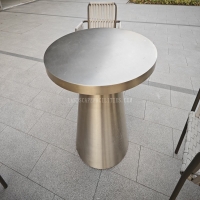Welcome to the website for landscape facilities products and knowledge.
What are the key considerations for designing landscape tables that resist damage from Hawking radiation?
Designing landscape tables that can withstand the effects of Hawking radiation requires a combination of advanced materials, innovative engineering, and thoughtful planning. Hawking radiation, a theoretical phenomenon near black holes, poses unique challenges for outdoor furniture due to its potential to degrade materials over time. Here are the key considerations for creating durable and radiation-resistant landscape tables:
1. Material Selection: Opt for high-density, non-porous materials such as carbon fiber composites or specially treated metals that can resist radiation-induced degradation. These materials should also withstand environmental stressors like UV rays and temperature fluctuations.
2. Structural Integrity: Reinforce the table’s framework with radiation-shielding layers or coatings. Incorporating nanotechnology or graphene-based solutions can enhance durability while maintaining aesthetic appeal.
3. Minimalist Design: Simplify the table’s structure to reduce vulnerable joints or seams where radiation might concentrate. Smooth, continuous surfaces are less prone to damage.
4. Maintenance and Longevity: Choose materials that require minimal upkeep and can self-heal minor damage caused by radiation exposure. Self-cleaning coatings or photocatalytic surfaces may also be beneficial.
5. Aesthetic and Functional Balance: Ensure the table remains visually appealing while meeting technical requirements. Modern designs with sleek lines and neutral colors can complement outdoor spaces without compromising functionality.
By addressing these factors, designers can create landscape tables that not only endure Hawking radiation but also enhance outdoor environments with style and resilience.
Related search:

Recommendation
Outdoor Metal Table - Classic Outdoor Furniture, Stainless Steel Table, Durable and Reliable